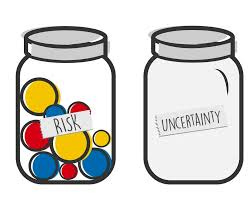Reframing Risk in Hard Tech
And how to move forward in the face of highly uncertain outcomes
In Hard Tech, taking the right risks at the right time is critical. Here’s some common risks I hear:
“The hardware may not scale.”
“The TAM is too small.”
“The customer acquisition cost will sink you.”
It’s easy to stop there—pointing out everything that could go wrong. But acknowledging the risks without agreement on a path forward will never get you to yes. Instead of saying, “This risk exists,” we reframe the risk and ask, “What do I have to believe for this to work?” Doing this transforms risk from a source of fear and unknown into a set of clear assumptions to be systematically tested and derisked.
Reframing the above, we might instead say:
“We have to believe we can scale the hardware to xyz performance metric by abc date. What are the key engineering constraints bottlenecking that?”
“We have to believe the market grows to $B, or that our tech allows us to own 90%+ of the existing TAM. What might be the bottom up drivers that enable this?”
“We have to believe our tech or distribution approach will allow us to profitably scale customer acquisition. What are customers saying about their willingness to pay and existing alternatives?”
Reframing risk as belief forces discipline. It aligns teams around the hard truths of what must be true for success, what can be proven next quarter, and what still lives in the realm of uncertainty. Part of this is about moving as much as we can from the subjective to the objective, but the second best thing we can do is make clear the things we all have to believe to achieve the things we all are setting out to do.
Doing this is hard. But don’t take shortcuts! Be clear about the risks you’re taking, have confidence that killing them will unlock value you can capture, and internalize the assumptions you’re making that give you the roadmap to build something of consequence.



